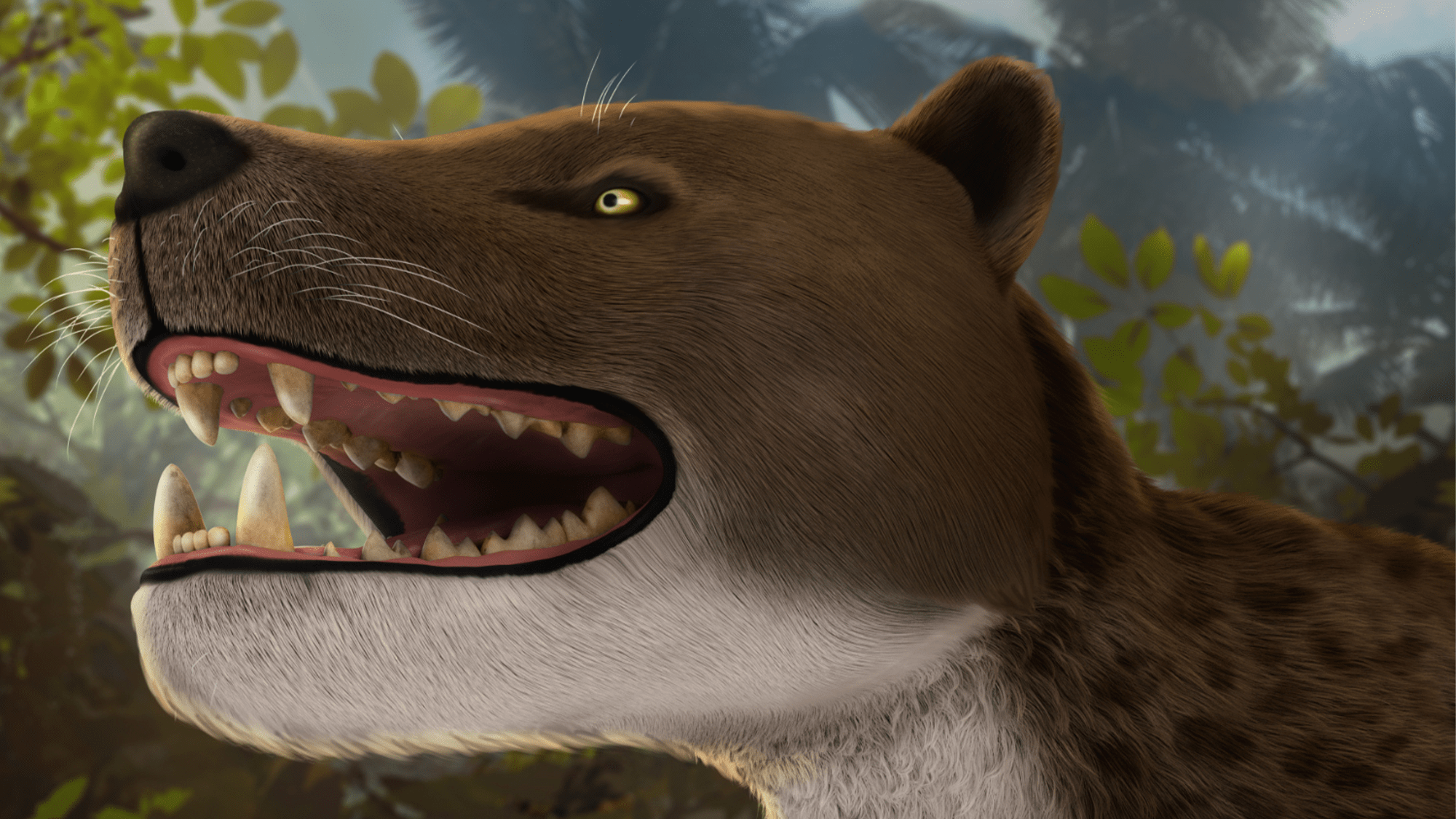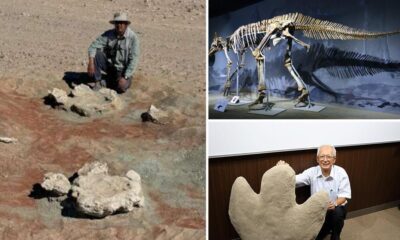Gadgets
Skull of a 30-million-year-old apex predator discovered in Egypt

Around 30 million years ago, Egypt was once covered in dense forests inhabited by fearsome big cat-sized carnivores known as Hyaenodonta. These powerful predators thrived in the absence of dinosaurs but eventually faced their own demise.
Recently, a team of scientists exploring the desert in present-day Fayum, Egypt made a groundbreaking discovery. They uncovered a new species of Hyaenodonta with incredibly strong jaw muscles. This new species, named Bastetodon syrtos, has been detailed in a study published on February 17 in the Journal of Vertebrate Paleontology.
Spotting a skull
Hyaenodonts like Bastetodon existed long before modern carnivorous mammals such as cats and dogs. With sharp teeth reminiscent of hyenas, they roamed African landscapes preying on early primates, hippos, elephants, and hyraxes in the ancient forests southwest of present-day Cairo. The team of paleontologists was excavating 30 million-year-old rock layers in the Fayum Depression, a critical fossil site for understanding mammal evolution in Africa.
The discovery of a nearly complete skull of an ancient apex carnivore, with its sharp teeth and powerful jaw muscles, marked a significant find. The specimen was named after the Egyptian goddess Bastet, symbolizing protection, pleasure, and good health.
A new look at an old discovery
The new species, Bastetodon, shed light on a group of lion-sized hyaenodonts first identified in Fayum over a century ago. This specimen, now classified under a new genus called Sekhmetops, underscores the African origin of these large hyaenodonts. The goddess Sekhmet, associated with lions, connects symbolically with Bastet, reflecting their scientific and symbolic ties within the same order.
Both Bastetodon and Sekhmetops eventually migrated from Africa to Asia, Europe, India, and North America, becoming some of the largest carnivorous mammals around 18 million years ago. However, changes in climate and tectonics during the Oligocene epoch led to the decline of these specialized hyaenodonts, resulting in their extinction approximately 25 million years ago.
The times they are a changing
As Africa underwent significant environmental shifts, the rise of modern carnivorous mammals like cats and dogs spelled the end for hyaenodonts. The discovery of Bastetodon provides valuable insights into the evolution and global distribution of these ancient predators, prompting further research into their relationships with changing environments over time and across continents.
Please rewrite this sentence.
-

 Destination8 months ago
Destination8 months agoSingapore Airlines CEO set to join board of Air India, BA News, BA
-

 Breaking News10 months ago
Breaking News10 months agoCroatia to reintroduce compulsory military draft as regional tensions soar
-

 Gadgets4 months ago
Gadgets4 months agoSupernatural Season 16 Revival News, Cast, Plot and Release Date
-

 Tech News1 year ago
Tech News1 year agoBangladeshi police agents accused of selling citizens’ personal information on Telegram
-

 Productivity12 months ago
Productivity12 months agoHow Your Contact Center Can Become A Customer Engagement Center
-

 Gadgets4 weeks ago
Gadgets4 weeks agoFallout Season 2 Potential Release Date, Cast, Plot and News
-

 Breaking News10 months ago
Breaking News10 months agoBangladesh crisis: Refaat Ahmed sworn in as Bangladesh’s new chief justice
-

 Toys12 months ago
Toys12 months ago15 of the Best Trike & Tricycles Mums Recommend























